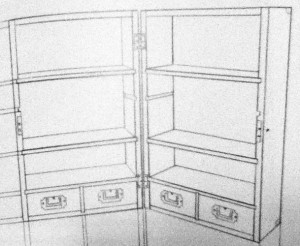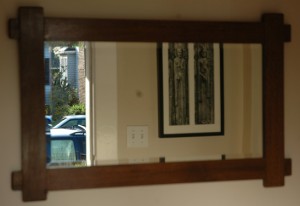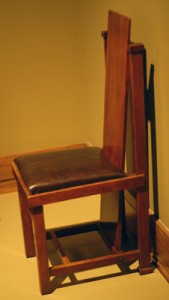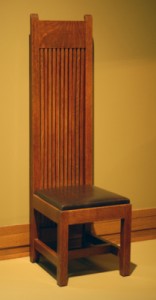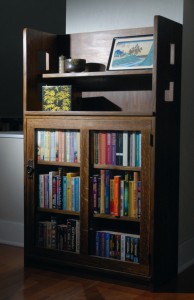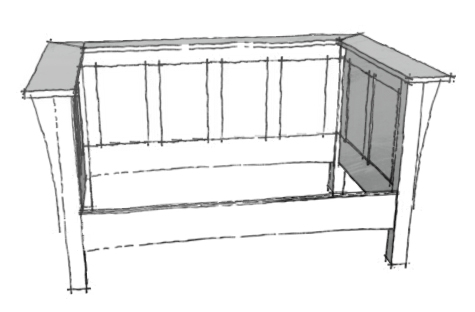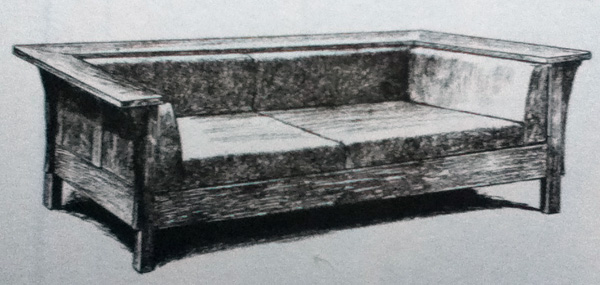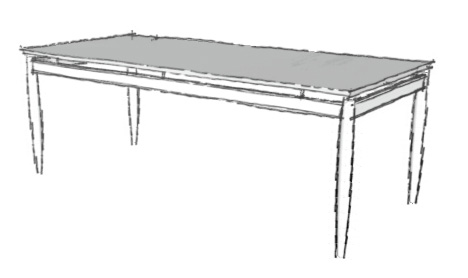
Finn Juhl’s design features a beveled top suspended above a simple base distinguished by turned, tapered legs.
For my next project I’m jumping out of my usual Arts & Crafts period work several decades to build a Mid-century Modern coffee table by the Danish designer Finn Juhl. Juhl’s table features a beveled top suspended above its base by six dowels. Turned, tapered legs distinguish the rectilinear base.
The coffee table, along with sideboard, is perhaps the signature piece of mid-Century furniture, in much the same way the Morris chair has become emblematic of Arts & Crafts furniture. And Juhl’s table is an intriguing example of the form. He used the floating top elsewhere in his designs, but more often in his chairs, making its appearance as a table top a bit of an aberration. The original was built of teak, but I’m contemplating a version in fir or cherry, depending how closely I want to hew to the original construction, which features a veneered top banded with solid wood edging. If I follow suit, I’ll use some cherry plywood left over from an old project. If I opt for a solid wood top, I’ll be able to use some wide fir boards I picked up when a local sawyer moved shop to Alaska. Of course a solid wood top creates the potential for movement problems with seasonal changes in humidity, but I think there’s enough flex in how the top joins the base to absorb that movement. Continue reading

